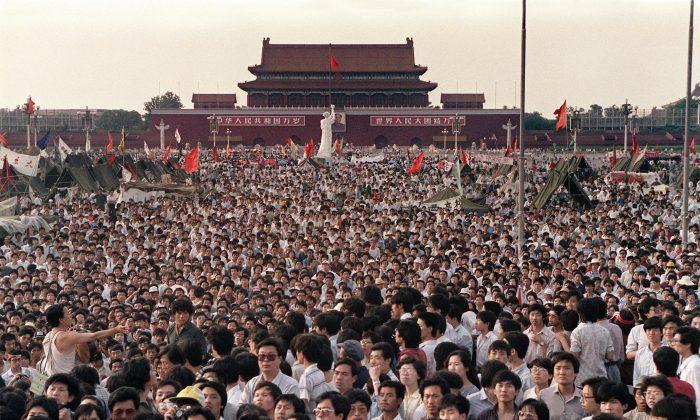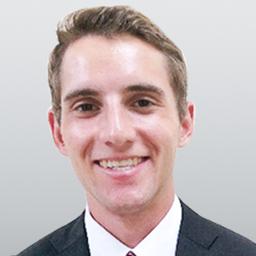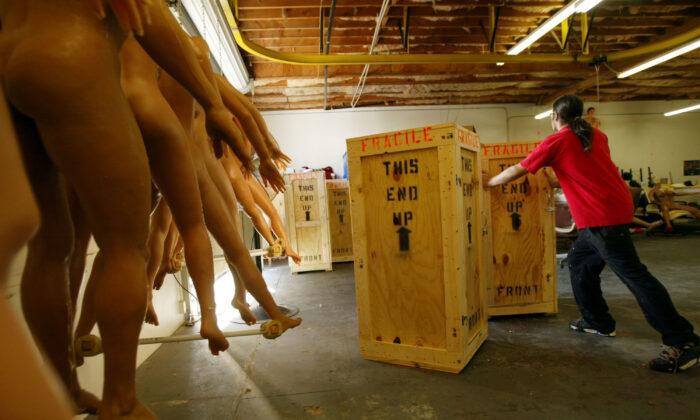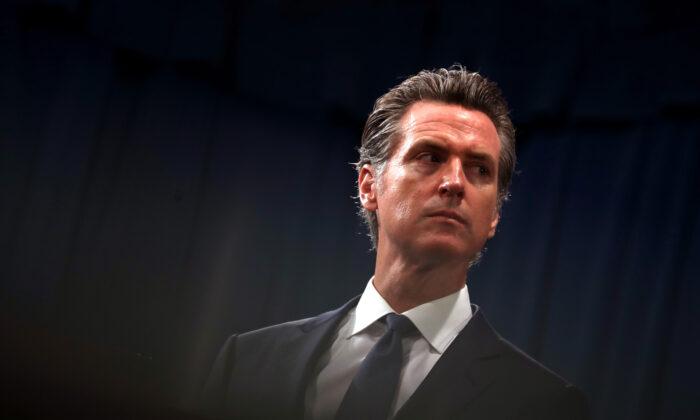ORANGE, Calif.—Thirty years ago, a brief glimmer of democracy formed in the heart of China. However, it was quickly stamped out by the communist regime that still rules to this day.
On May 31 at Chapman University, an event commemorating the 30-year anniversary of the Tiananmen Square protests was hosted by the Smith Institute at Chapman University’s Argyros School of Business and Economics.
The event, “30 Years After Tiananmen: The Struggle for Chinese Democracy,” included the screening of a short film titled “Tank Man,” about the famous unidentified man who stopped in front of a convoy of tanks during the protests following the death of Communist Party General Secretary Hu Yaobang. Hu was famous for his promotion of political reforms during his tenure as CPC general secretary. The protests lasted from April 15 to June 4, 1989.
The event also featured a panel including Robert Anthony Peters, writer and director of “Tank Man,” Wang Chaohua, who was a student leader at the protests, and Terril Jones, a former Associated Press reporter who covered the events as they were happening.
“That image [of the Tank Man] had always haunted me. It was one of those things where the first moment that you see it, you think ‘This is amazing. Who would do this? Who is this guy?’ I always wanted to know who he was, so I decided to create my own story of it.”
The film runs about 15 minutes and was locally produced and filmed in Los Angeles with a limited budget. Peters expressed his hope to make a full-length feature film at some point.
“The goal is to make a more epic story with more aspects of the Tiananmen Square Massacre and the surrounding incidents. [I want to] tell it in a way with multiple storylines from the different perspectives of a soldier, a student, the mother of a student, and a government official, and to have all that weave together at the end.”
Peters said the film has been shown around the world, including Chile, Venezuela, and Iran.
“I like to say we’re a hit in crumbling dictatorships,” he joked.
He explained that he has been unable to attend most of the screenings of his film.
“All my money went to submitting them to the festivals. I didn’t get to go to them.”
In regards to the making of the film, Peters explained that a number of people auditioning for the film backed out after finding out what the film was about.
Student Leader Flees to United States
Wang Chaohua, one of the 21 most-wanted Beijing student leaders from the 1989 Tiananmen protests, lived as a fugitive for six months before fleeing to the United States in 1990.Wang was asked about what inspired her to get involved with the protests and what led to the historic turn of events.
“I was a master’s student studying Chinese literature at the graduate school attached to the Chinese Academy of Social Sciences. I went to the square the night before Hu Yaobang’s official funeral. Everybody had heard the broadcasting news programs that Tiananmen and the nearby streets would be cordoned down the next day,” she told The Epoch Times.
Wang explained that this was to guard against the large number of students who had been laying wreaths to honor the death of Hu.
“In the week between Hu Yaobang’s death and his funeral, students and nonstudents had gone to the Monument to the People’s Heroes [in Tiananmen] to lay wreaths. I was there and saw people gathering in huge numbers.
“The next morning, Wuer Kaixi, the No. 2 student leader in the protests, was holding a megaphone going around,” she said.
Wang explained that the government didn’t allow student representatives to go into the official funeral. Wuer told each school to send each of their own representatives.
“Our graduate school was rather small. We had about 500 students. I asked around, ‘Shall we go?’ No one responded, so it was decided that I [would] go. So that was the beginning of how I got involved. Once I attended the meeting, I became an active voice in my opinions, and they noticed me. I was chosen to became a member of the standing committee [of the student protest group], which was initially seven members and by the end of April, it became nine members. I maintained my membership all the way up to June 4.”
Wang was asked about how she maintained a low profile following the crackdown on protesters and her escape to the United States.
“I was in hiding and was helped by people in Beijing who I didn’t know before April. I got to know them only after May. I could never come out until the day we travelled from Beijing to Guangzhou. I was helped by the Hong Kong underground, who helped hundreds of dissident participants of the protests.”
Journalist Reports His Experiences
Terril Jones was the Associated Press reporter assigned to cover General Secretary Mikhail Gorbachev’s visit to Beijing at the time of the Sino-Soviet Summit, which happened to be occurring at the same time as the Tiananmen protests.Jones explained that while he had been in China several times before for his visit in May 1989, the Sino-Soviet Summit between Gorbachev and General Secretary Zhao Ziyang was considered a momentous occasion.
“We saw Gorbachev ending 30 years of Sino-Soviet estrangement in Beijing, to the great consternation of the United States. I was elated that I was going to be a part of what I knew was going to be a historic meeting,” he told The Epoch Times.
In his time reporting on the ground, the protests began to take shape, and Jones’ AP team began to shift its focus on the protests taking place in Tiananmen. Jones, who is fluent in Mandarin, was able to interview a number of the student protesters at the time. When asked as to whether he was aware of their fate and as to whether they were ever imprisoned, Jones expressed his concern about what could have possibly happened to them.
“It’s a serious worry. We, the foreign media, named students for three weeks. ‘The system is corrupt,’ ‘This leader must step down,’ ‘This is what’s wrong with China,’ said so and so, a student at such and such university. [Our naming of the students] lends credibility and it’s difficult to get anonymous quotes approved because you have to have a good reason for doing so. We don’t know what happened to most of the people.”
Jones explained that while he never interviewed any of the students on the 21 most-wanted list, some of the people were very active organizers. “I do wonder what happened to many of them.”
During the most hectic moments of the Tiananmen protests and government factions mixed responses to the events, Jones contacted the foreign ministry to clarify who was in charge.
“I asked the foreign ministry who was in charge of China. The foreign ministry was still functioning, but we wanted to know who was in charge of the Chinese government. Their response was, ‘We can’t answer that because we don’t have an answer.’ I don’t know if that meant that they were somewhat sympathetic to the students and wanted to emphasize that it was a bit chaotic on the inside or not,” Jones said.
Jones spoke of the chaos during his time he was on the ground.
“There were five AP reporters and we were staffing the square 24 hours. Sometimes I spent the nights out there. We never knew what the story of the day was going to be. We just knew we were covering the biggest story in the world at the time and were keenly interested in which direction it would take us, which is a journalist’s dream,” he said.
Jones also described what he called the “people power” aspect of the events.
“There were lines of tanks and armored personnel carriers (APCs) that were gutted and stopped by people wielding weapons from the stone age. People were literally using sticks and stones, some bottles and Molotov cocktails, but that’s all. Nobody ever had anything like a firearm. I was shocked that they could bring to a halt these vehicles. The next day, to the west of the square, I saw a long line of burned-out trucks and APCs and that shocked me.”
When asked as to whether he witnessed any of the attacks, Jones said he saw an escalation of violence on the night of June 3. A group of protesters had ambushed an APC.
“They jammed the APC and it was on fire, pulled the soldiers from out from it. I think it was city folk attacking the soldiers while the students were fending them off and putting them into a bus. That’s all I saw.”
Jones explained that the memory was still very vivid in his mind, explaining how the loud continuous noises coming from the tanks, helicopters, and gunfire.
“It was very vivid and the adrenaline just kept you going,” he said.
The event at Chapman was a sobering reminder of the events that happened 30 years ago in Tiananmen Square. The three panelists, two of whom were on the scene, and one who dramatized the events into a film, hope to remind the world of the issues that still face China today.






Friends Read Free